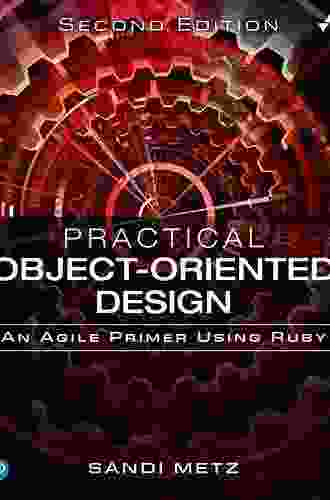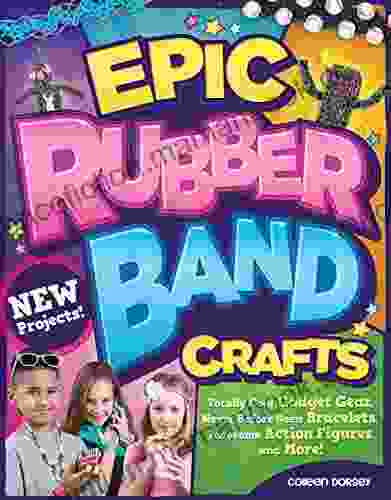Unlocking the Secrets of Practical Object-Oriented Design: A Comprehensive Guide

In the realm of software development, object-oriented design (OOD) stands as a beacon of clarity, flexibility, and maintainability. By organizing code into reusable objects that encapsulate both data and behavior, OOD empowers developers to create complex systems with ease. However, mastering the art of practical OOD requires more than just theoretical knowledge. It demands a deep understanding of its principles, coupled with real-world experience.
4.8 out of 5
| Language | : | English |
| File size | : | 14069 KB |
| Text-to-Speech | : | Enabled |
| Enhanced typesetting | : | Enabled |
| Print length | : | 286 pages |
| Screen Reader | : | Supported |
Principles of Practical OOD
At the heart of practical OOD lies a set of fundamental principles that guide the design process:
- Encapsulation: Conceal the implementation details of objects, making them accessible only through well-defined interfaces.
- Abstraction: Focus on the essential properties and behaviors of objects, hiding unnecessary complexity.
- Modularity: Break down complex systems into smaller, independent modules that can be easily combined and recombined.
- Inheritance: Enable objects to inherit properties and behaviors from parent classes, promoting code reuse and extensibility.
- Polymorphism: Allow objects of different classes to respond to the same messages in a uniform way, increasing flexibility.
Applying OOD Principles
Putting OOD principles into practice involves a methodical approach:
- Identify and Define Objects: Decompose the problem domain into a set of distinct objects that represent real-world entities.
- Establish Relationships: Define relationships between objects using associations, inheritance, and composition.
- Encapsulate Data and Behavior: Hide the implementation details of objects within their private members.
- Design Interfaces: Create public interfaces for objects that specify the methods and properties available to other objects.
- Refactor and Iterate: Continuously improve the design by refactoring code and incorporating feedback from development and testing.
Benefits of Practical OOD
Embracing practical OOD brings numerous benefits to software development:
- Code Maintainability: Encapsulation and modularity make it easy to modify and update code without affecting other parts of the system.
- Code Flexibility: Polymorphism and inheritance enable objects to be easily extended and adapted to changing requirements.
- Efficient Software Systems: Modular design promotes code reuse and reduces code duplication, leading to faster execution and reduced memory consumption.
- Improved Testability: Well-defined interfaces and decoupled components facilitate testing and debugging.
- Enhanced Collaboration: Clear and concise designs foster collaboration and knowledge sharing among developers.
Mastering practical OOD is not a one-time accomplishment but an ongoing journey of learning, experimentation, and refinement. By adhering to its principles, developers can create software systems that are not only functional but also maintainable, flexible, and efficient. Remember, the key to success lies in combining theoretical knowledge with real-world experience. Embrace the challenges, seek feedback, and constantly strive to improve your design skills. The rewards of practical OOD are well worth the effort.
Additional Resources
- Object-Oriented Design Tutorial
- Learn Object-Oriented Programming
- Object-Oriented Design Specialization
4.8 out of 5
| Language | : | English |
| File size | : | 14069 KB |
| Text-to-Speech | : | Enabled |
| Enhanced typesetting | : | Enabled |
| Print length | : | 286 pages |
| Screen Reader | : | Supported |
Do you want to contribute by writing guest posts on this blog?
Please contact us and send us a resume of previous articles that you have written.
 Top Book
Top Book Novel
Novel Fiction
Fiction Nonfiction
Nonfiction Literature
Literature Paperback
Paperback Hardcover
Hardcover E-book
E-book Audiobook
Audiobook Bestseller
Bestseller Classic
Classic Mystery
Mystery Thriller
Thriller Romance
Romance Fantasy
Fantasy Science Fiction
Science Fiction Biography
Biography Memoir
Memoir Autobiography
Autobiography Poetry
Poetry Drama
Drama Historical Fiction
Historical Fiction Self-help
Self-help Young Adult
Young Adult Childrens Books
Childrens Books Graphic Novel
Graphic Novel Anthology
Anthology Series
Series Encyclopedia
Encyclopedia Reference
Reference Guidebook
Guidebook Textbook
Textbook Workbook
Workbook Journal
Journal Diary
Diary Manuscript
Manuscript Folio
Folio Pulp Fiction
Pulp Fiction Short Stories
Short Stories Fairy Tales
Fairy Tales Fables
Fables Mythology
Mythology Philosophy
Philosophy Religion
Religion Spirituality
Spirituality Essays
Essays Critique
Critique Commentary
Commentary Glossary
Glossary Bibliography
Bibliography Index
Index Table of Contents
Table of Contents Preface
Preface Introduction
Introduction Foreword
Foreword Afterword
Afterword Appendices
Appendices Annotations
Annotations Footnotes
Footnotes Epilogue
Epilogue Prologue
Prologue Sam Hamill
Sam Hamill Bertram C Bruce
Bertram C Bruce Linlin Wills
Linlin Wills Rosie Thomas
Rosie Thomas Arthur J Stewart
Arthur J Stewart Bill Vlasic
Bill Vlasic David Hughes
David Hughes R Douglas Hurt
R Douglas Hurt Bob Aldrich
Bob Aldrich James Naughton
James Naughton Cyr Powers
Cyr Powers Raven S Mind Publishing
Raven S Mind Publishing Ashley Mears
Ashley Mears Kenjiro Hata
Kenjiro Hata Juddy Anderson C Punzalan
Juddy Anderson C Punzalan Chris Wiltz
Chris Wiltz Charles A Perrone
Charles A Perrone Cj Lyons
Cj Lyons Charles Bookman
Charles Bookman David Podlipny
David Podlipny
Light bulbAdvertise smarter! Our strategic ad space ensures maximum exposure. Reserve your spot today!

 George R.R. MartinEmbrace the Bond of Love: A Comprehensive Guide to the Love Paw Cross Stitch...
George R.R. MartinEmbrace the Bond of Love: A Comprehensive Guide to the Love Paw Cross Stitch...
 Ethan GrayHow to Start a Conversation and Get a Date: Create the Relationship You Want...
Ethan GrayHow to Start a Conversation and Get a Date: Create the Relationship You Want...
 Natsume SōsekiUnveiling the Secrets of Amazon Best Deals Magazine: A Comprehensive Shifio...
Natsume SōsekiUnveiling the Secrets of Amazon Best Deals Magazine: A Comprehensive Shifio... Juan RulfoFollow ·18.8k
Juan RulfoFollow ·18.8k Roald DahlFollow ·12.4k
Roald DahlFollow ·12.4k Bob CooperFollow ·19.4k
Bob CooperFollow ·19.4k William ShakespeareFollow ·13.9k
William ShakespeareFollow ·13.9k Doug PriceFollow ·18k
Doug PriceFollow ·18k Brody PowellFollow ·3.2k
Brody PowellFollow ·3.2k Kendall WardFollow ·13.7k
Kendall WardFollow ·13.7k Banana YoshimotoFollow ·5k
Banana YoshimotoFollow ·5k

 Ashton Reed
Ashton ReedClean(ish) Food for People Who Like to Eat Dirty
By: [Your Name] Are...

 Ronald Simmons
Ronald SimmonsThe Handbook for Educators: A Comprehensive Guide to...
The Handbook for...

 Derrick Hughes
Derrick HughesAny Place Hang My Hat: A Hauntingly Beautiful Novel by...
A Masterpiece of...

 Adrien Blair
Adrien BlairFly Me to the Moon Vol. 5: A Lunar Odyssey through...
In the vast...

 William Powell
William PowellTips By Gardeners On Variety Of Subjects
Gardening...
4.8 out of 5
| Language | : | English |
| File size | : | 14069 KB |
| Text-to-Speech | : | Enabled |
| Enhanced typesetting | : | Enabled |
| Print length | : | 286 pages |
| Screen Reader | : | Supported |








